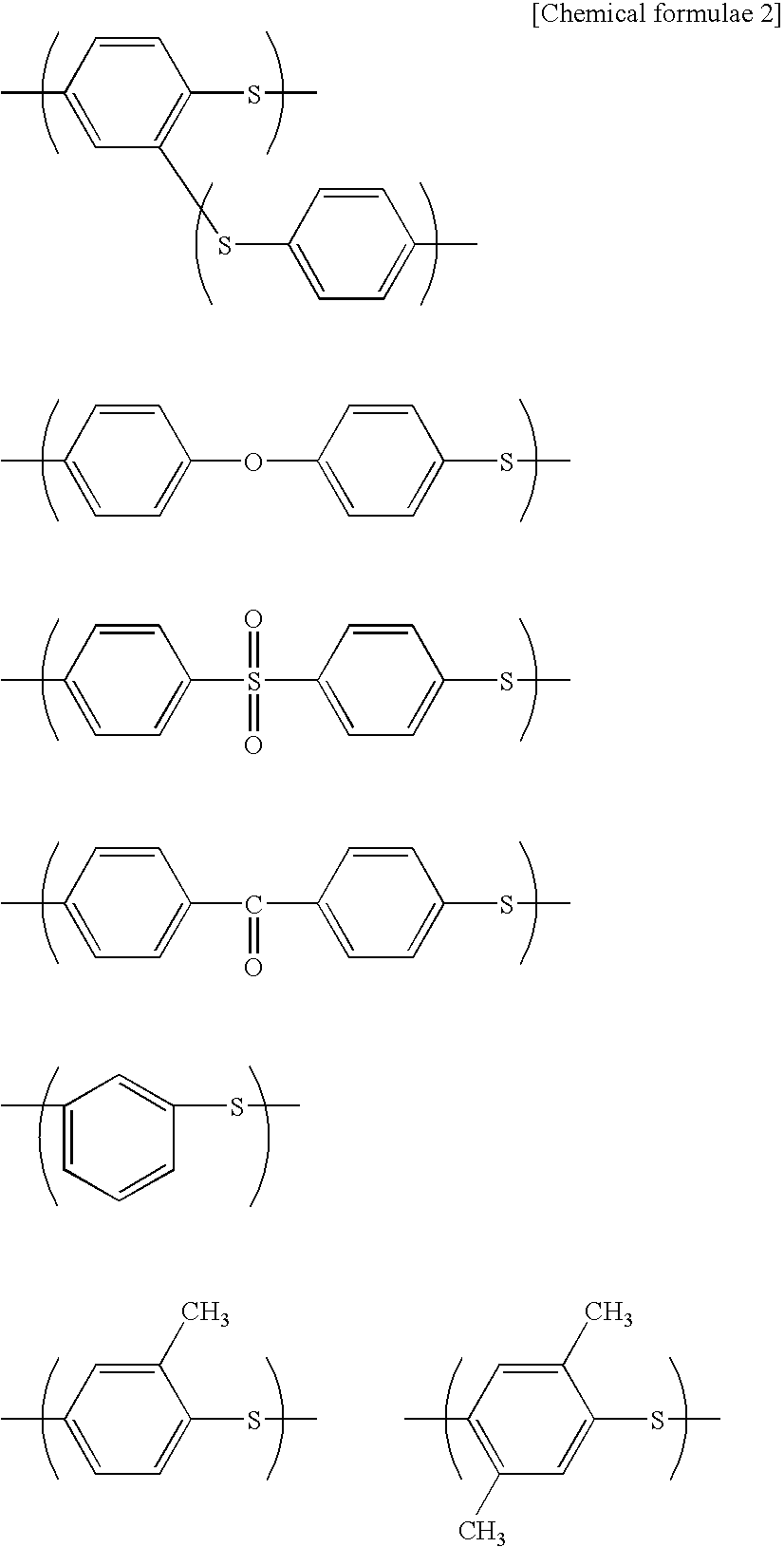Polyphenylene sulfide resin, process for producing the same, and fiber comprising the same
a polyphenylene sulfide resin and polyphenylene sulfide technology, applied in the direction of monocomponent synthetic polymer artificial filaments, textiles and papermaking, melt spinning methods, etc., can solve the problems of high temperature and melt processing, high pressure during spinning, and high yarn breaking rate, and achieve low number of yarn breaking times , excellent physical properties such as yarn strength and melt spinnability, small rise in pack pressure
- Summary
- Abstract
- Description
- Claims
- Application Information
AI Technical Summary
Benefits of technology
Problems solved by technology
Method used
Image
Examples
reference example 1
Preparation of PPS-1
[0142]An autoclave with a stirrer and a valve at the bottom was charged with 8267.37 g (70.00 moles) of 47.5% sodium hydrosulfide, 2924.98 g (70.20 moles) of 96% sodium hydroxide, 13860.00 g (140.00 moles) of N-methyl-2-pyrrolidone (NMP), 2187.11 g (26.67 moles) of sodium acetate and 10500.00 g of ion exchange water, and while nitrogen was fed at atmospheric pressure, the mixture was heated gradually up to 240° C., taking about 3 hours, to distill away 14743.16 g of water and 280.00 g of NMP. Then, the reaction vessel was cooled to 160° C. The amount of water remaining in the system for each mole of the supplied alkali metal sulfide was 1.08 moles including the water consumed for hydrolysis of NMP. Further, the amount of the hydrogen sulfide scattered was 0.023 mole for each mole of the supplied alkali metal sulfide.
[0143]Subsequently 10254.40 g (69.76 moles) of p-dichlorobenzene (p-DCB) and 6451.83 g (65.17 moles) of NMP were added, and the reaction vessel was h...
reference example 2
Preparation of PPS-2
[0148]PPS-2 was prepared as described for Reference Example 1, except that the amount of 96% sodium hydroxide supplied was 2942.92 g (70.63 moles), that the amount of sodium acetate supplied was 1856.32 g (22.64 moles), and that the amount of p-DCB supplied was 10477.48 g (71.28 moles).
[0149]The obtained PPS-2 had an MFR of 642 g / 10 min and an average particle diameter of 150 μm.
reference example 3
Preparation of PPS-3
[0150]PPS-3 was prepared as described for Reference example 1, except that the amount of p-DCB supplied was 10324.77 g (70.24 moles).
[0151]The obtained PPS-3 had an MFR of 298 g / 10 min and an average particle diameter of 300 μm.
PUM
| Property | Measurement | Unit |
|---|---|---|
| pore size | aaaaa | aaaaa |
| melt flow rate | aaaaa | aaaaa |
| temperature | aaaaa | aaaaa |
Abstract
Description
Claims
Application Information
 Login to View More
Login to View More - R&D
- Intellectual Property
- Life Sciences
- Materials
- Tech Scout
- Unparalleled Data Quality
- Higher Quality Content
- 60% Fewer Hallucinations
Browse by: Latest US Patents, China's latest patents, Technical Efficacy Thesaurus, Application Domain, Technology Topic, Popular Technical Reports.
© 2025 PatSnap. All rights reserved.Legal|Privacy policy|Modern Slavery Act Transparency Statement|Sitemap|About US| Contact US: help@patsnap.com


